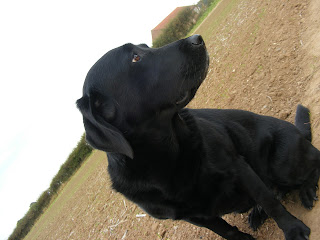Media Studies Questionnaire
Name: William Robinson
GCSE Results:
Art: D Physics: A Biology: B Chemistry: A Graphics: A IT: A* English: B English Literature: B Maths: B RPSE: A
Hobbies: Go-Karting, seeing my friends, gaming
Print Media:
Sports pages, mainly F1/motorsport
Official Nintendo Magazine: I enjoy gaming, and I am a big Nintendo fan, so I get a magazine concerning both.
F1 Racing/Autosport: I’m a motorsport (mainly F1) fan so these magazines are good for me.
Radio Times: For TV schedules, reviews and news.
Radio: I passively listen to my parent’s radio.
Music Industry:
Pop/rock is my favourite type of music.
I use the online music player Spotify, and CDs.
I think that illegal downloading is wrong. The people who put the effort into making the music and products should get the money and rewards they deserve.
I like things such as montages and wish to create them in the future.
Video Games:
I am a big fan of the Japanese games company Nintendo, and I collect/play their games, consoles and merchandise. I also use an Xbox 360. However, I mainly use Nintendo consoles like the 3DS and Wii. I also took part in the national competition Britain’s Best Nintendo Gamer and won the Norfolk qualifier in Norwich. This put me through to the top 16 for the big final in Norwich, which was a big event. I came top 8, and won over 500 pounds worth of games and consoles, including a 3DS for free 2 days before release!
I do not think they have a negative effect, on the whole. I think this is assumed by people who do not play them, or know nothing about them. It is definitely prejudice, as they are overly negative about them.
New Technology:
I think new technology lets you see more of the world because of the easier access to videos, pictures etc. It makes people more culturally aware.
New technologies such as social nertworking sites are vastly improving communication. People say they can be bad things due to groomers, etc. but mainly they are a great way to stay in touch.
Smart phones, etc. are a brilliant, easy way of accessing media texts quickly, and on the move. This is great, as it doesn’t limit media to the house or cinema.
Editing software, High-Tec cameras, powerful computers etc have great tools for creating your own home-made media texts nowadays, which is allowing people to use their talents more easily.
TV:
Dave, E4, BBC and ITV.
These channels have unique, high-quality dramas – this is my favourite genre of TV show.
Drama / Comedy-Drama is my favourite type of TV show due to the absorbing plots, exciting action, and likable characters. Good dramas are unmissable.
My 5 unforgettable TV shows:
London Bombings: When I was told about this I thought it was a joke to get me off the TV! The shock was huge, especially as it as close to home.
FRIENDS: The Last One: A brilliant, fitting ending to one of the most revolutionary, popular, and brilliant shows ever.
F1 – Brazil 2007 AND 2008.
These two season finales were some of the best TV I’ve ever seen – it’s like someone has written a script! The first one completed an amazing end-of-season charge from my favourite driver to take the World Championship.
In 2008, the winner of the championship was in doubt until the line-the championship was decided on the last corner of the last race of the season! Brilliant.
Feature Film:
My favourite genre is Action/adventure, for mainly the same reasons as why I like TV Drama: the stories, action and drama.
My Favourite films:
Inception: The action scenes are some of the best in the whole of cinema. This combined with some breathtaking special effects and great acting ends in a brilliant film.
Battle Los Angeles: The fight scenes in this film are some of the most fast-paced, action-packed and epic I’ve seen. The film also has the tension and good cast to back this up.
I like to either watch films on my own at home (on TV/DVD) or in the cinema with friends.
My favourite place to go to the cinema is Vue. The seats are comfortable, and the quality in general is good. It is also in an easily accessible area.
How I like to watch film depends on how I’m watching it. If I’m on my own at home, I like to relax on my own while watching film. If I’m at the cinema, I like to be in a group with my friends so that I have someone to share the evening with.
Am I a Media Producer?
I do produce YouTube videos, such as gaming commentaries. This is when I play a game while giving advice and generally talking about stuff. I have also assisted friends in media productions.
Conclusion:
The only show I can remember that has offended me recently is The X Factor. They provoke people into anger, violence or sadness on purpose, just to try and make the show more popular. It really angers me.
My favourite show is the sci-fi drama Primeval. It is my favourite show because of the lovable characters, absorbing storylines, thrilling action scenes, and amazing special effects (for the creatures)
I can’t think of one.
If I was making a show, I would have it on TV as it has a huge audience. I would produce a show telling people that they have very good lives and that they are lucky to live in such a safe, free country. I would explain how they complain over trivial things and that they should have a bigger view of the world and how lucky they are.
I am taking Media Studies because I want to go into a career concerning Graphic Design and/or Media.











